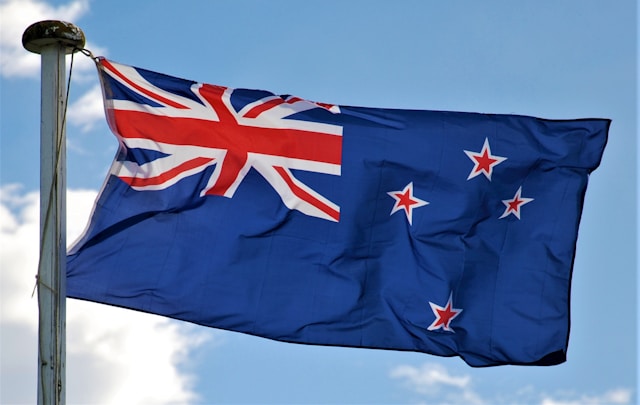
Key takeaways:
- Since 2014, the Chinese Central Government has been casting more spotlight on commercial mediation, enabling it to play a more prominent role in China.
- As of 2021, over 231,000 mediators are available on the mediation platforms of courts nationwide. A decade ago, nonetheless, the platforms along with mediators working on such platforms were nowhere to be found.
- The procedure of judicial confirmation renders settlement agreements legally enforceable, which essentially boosts the role of commercial mediation organizations in resolving commercial disputes.
- Tackling the litigation explosion is the main reason behind China’s promotion of commercial mediation.
Since 2014, the Chinese Central Government has been casting more spotlight on commercial mediation, enabling it to play a more prominent role in China.
Ms. Wang Fang (王芳) from the China Council for the Promotion of International Trade (CCPIT) Commercial Legal Service Center published an article entitled “The Ten-Year Development of Chinese Commercial Mediation” (中国商事调解这十年) in the journal “China’s Foreign Trade” (中国对外贸易) (No. 10, 2022), lending an insight into the progress China has made in commercial mediation. We summarize its highlights below.
I. Commercial mediation cases in China
1. Increase of commercial mediation centers
As of June 2022, CCPIT Mediation Center has established 62 regional mediation centers in various provinces, cities, and autonomous regions, especially some major cities, across China. All these centers, whose operation is guided by CCPIT Mediation Center, are subject to uniform mediation rules, thus forming a gigantic mediation service network.
In addition, as of December 2021, over 58,000 mediation organizations are accessible on the mediation platforms of courts nationwide. It is these organizations that accept the mediation cases which would otherwise be initially presented as lawsuits.
2. A growth in mediator numbers and the capacity building
As of December 2021, over 231,000 mediators are available on the mediation platforms of courts nationwide. A decade ago, nonetheless, the platforms along with mediators working on such platforms were nowhere to be found.
Responding to the exponential growth of mediator numbers, Chinese commercial mediation organizations are working to boost the capacity of mediators by improving the rules of admission to practice as well as the system of mediator training and management. To illustrate the point further, CCPIT Mediation Center has formulated several standards of mediator management such as the “Rules for Mediator Training and Management” (调解员培训管理规定), the “Code of Conduct for Mediators” (调解员守则), and the “Rules for Appraising the Conduct of Mediators” (调解员行为考察规定).
3. A rise in mediation cases
Let’s take CCPIT Mediation Center as an example. In 2021, it accepted 3,675 mediation cases that would otherwise be initially presented as lawsuits, accounting for 75% of the mediation cases it accepted. Among them, 1,012 cases are initiated by voluntary applications, making up some 20%, and other cases are primarily brought by embassies, chambers of commerce, associations, or administrative organs.
As for the geographic distribution of the cases it accepted, domestic cases make up a predominant proportion, reaching 84%, and foreign-related cases account for 16%, involving such countries and regions as the United States, India, Australia, and Saudi Arabia.
When it comes to the cause of the cases the Center accepted, IP cases have been rising year on year. Formerly the applications to the Center were mainly related to goods trading disputes, but now IP disputes and goods trading disputes are increasing simultaneously, accounting for 30% and 24% of all cases accepted in 2021 respectively.
II. Rules of commercial mediation in China
China first highlighted the strategic significance of alternative dispute resolution (ADR) in 2014, aiming to render dispute resolution means such as mediation, arbitration, administrative rulings, administrative reconsideration, and litigation an organic whole, thus providing the parties with a diversity of choices for dispute resolution.
In 2016, China’s Supreme People’s Court (SPC) released a judicial policy on ADR, proposing to introduce platforms connecting litigation and mediation, which paves the way for optional mediation before litigation. Besides, the SPC has been encouraging qualified chambers of commerce, industry associations, mediation associations, private non-enterprise entities, and commercial mediation organizations to set up organizations for commercial and industry mediation. For more information about the policy, you may refer to our earlier post “The Future of Mediation in China: Synergy between Litigation and Mediation”.
In 2019, the Central Government published a policy on constructing the public legal services system, proposing to incorporate commercial mediation and arbitration into public legal services, as well as encouraging their advancement together with other dispute resolution mechanisms.
In 2020, the SPC released a program that separates complicated cases from simple ones in civil procedure. Under the program, for the settlement agreements reached under the efforts of legally established mediation organizations, courts can render a judicial confirmation on it. This practice was later affirmed by the Civil Procedure Law (revised in 2022). Judicial confirmation renders settlement agreements legally enforceable, which essentially boosts the role of commercial mediation organizations in resolving commercial disputes.
From then on, many regions in China have been trying to further commercial mediation. For instance, Shenzhen has formulated the “Regulation of Shenzhen Municipality on Promoting the Alternative Resolution of Conflicts and Disputes” (矛盾纠纷多元化解条例), stipulating the rules in terms of the establishment, charging, and supervision of commercial mediation organizations as well as the setting up of industry associations, etc. It is China’s first legislation pertaining to mediation organizations, though it is merely local legislation.
III. Our comments: why does China encourage commercial mediation?
Tackling the litigation explosion is the main reason behind China’s promotion of commercial mediation.
Related post:
Chinese courts have been facing a litigation explosion, which has caused work overload for judges.
To address the challenge of litigation explosion, China launched the two-year pilot program in 2019, based on which solutions that have been tested and verified are now demonstrated in the amendment to the CPL.
The keywords of the pilot program are “simplification” and “diversion”.
(1) Simplification: to reduce the judicial resources used for each case by simplifying the procedure of each case.
(2) Diversion: to reduce the caseload of courts by settling more cases in arbitration or mediation rather than litigation.
Commercial mediation has been sent to the growth trajectory under such contexts.
Contributors: Guodong Du 杜国栋









